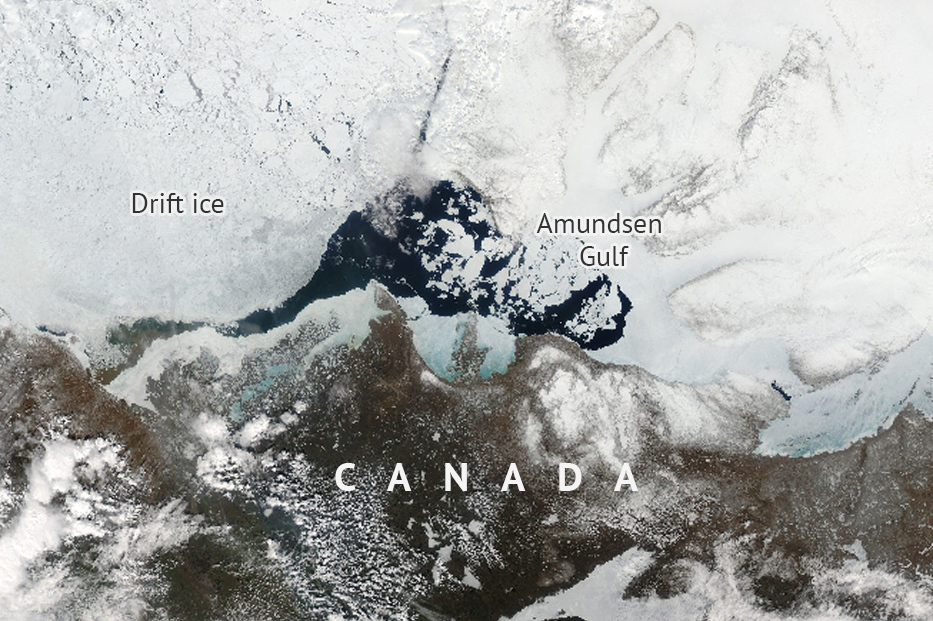
DeBriefed 9 June 2023: North American wildfires; Bonn climate talks; COP28 controversy
Aruna Chandrasekhar
06.09.23Aruna Chandrasekhar
09.06.2023 | 2:06pmWelcome to Carbon Brief’s DeBriefed.
An essential guide to the week’s key developments relating to climate change.
This is an online version of Carbon Brief’s weekly DeBriefed email newsletter. Subscribe for free here.
This week
Wildfire season
APOCALYPTIC SKIES: Images of New York’s Delhi-esque ash orange skies dominated news coverage in North America, as smoke from wildfires in Canada engulfed vast swathes of the continent. Pointing to the “unequivocal science” that climate change significantly increases severe wildfire risks and heatwaves, the New York Times wrote that “the world’s richest continent remains unprepared for the hazards of the not-too-distant future”.
CLIMATE LINK: But “it’s not as simple as blaming climate change”, said experts quoted by Yahoo News. “We will need to wait until formal attribution studies”, said Carbon Brief contributor Dr Zeke Hausfather on his Substack. Carbon Brief has just published a detailed piece exploring the links between the fires and climate change.
Bonn talks begin
NO AGENDA: Climate talks designed to prepare decisions for formal adoption at COP28 kicked off in Bonn, Germany, without an agreed final agenda for technical discussions, Euronews Green reported. This remains the situation four days in. Parties could not see eye-to-eye on adaptation, mitigation, equity or a new post-2025 climate finance target being on the agenda, Down to Earth reported.
STOCKTAKE: The Bonn talks will mark the end of the technical phase of the Global Stocktake, a climate report card on UN progress towards the goals of the Paris Agreement. But what form this outcome will take is still to be decided. A key test for the COP process will be how to deal with the thorny issue of loss and damage. COP veteran and scientist Prof Saleemul Huq wrote in Context.News that delivering a loss and damage fund will be crucial.
COP28 controversy
COMPROMISED: A Guardian investigation revealed that the UAE’s state-owned Abu Dhabi National Oil Company (Adnoc) has been able to read emails to and from the COP28 climate summit office. The COP28 office responded to the Guardian’s inquiries saying its email servers were “standalone” and “separate” from Adnoc’s, but only switched to a different server on Monday.
HOST GOALS: Elsewhere, countries are vying and undermining each other’s bids to play host to future summits. COP29’s eastern European venue remains undecided, as countries remained locked in “bitter conflict” with Russia, which is blocking bids from any EU countries, Climate Home News wrote. Meanwhile, a Latin American regional group endorsed the Brazilian city of Belém, close to the Amazon, to host COP30, the Associated Press reported, but critics question the area’s capacity to host more than 30,000 attendees.
Around the world
- JUST STOP LYING: A small group of Conservative politicians have falsely accused Labour of pursuing a “Just Stop Oil plan” by pledging to stop new oil and gas licences. Carbon Brief factchecked the misleading claims.
- BANGLADESH BLACKOUT: Bangladesh is staring at another two weeks of power cuts sparked by summer demand, fuel and dollar reserve shortages, the Economic Times reported. “People are getting sick in the heat,” said opposition leaders.
- ELEPHANT IN THE ROOM: A $4bn oil pipeline supported by Total Energy and a Chinese state oil company will impact four nature reserves in Uganda and Tanzania
– posing a climate, biodiversity and development dilemma for Africa, Bloomberg reported. - ‘UNJUST AND DISCRIMINATORY’: China “lashed out at a raft of EU policies”, including a critical minerals law and carbon border measures at the EU’s Trade Policy Review at the World Trade Organisation, South China Morning Post reported.
800m
The number of trees in the Amazon cut down in the past six years to meet demand for Brazilian beef, according to a new investigation published in the Guardian.
Latest climate research
- The Arctic Ocean could see a sea ice-free summer as early as the 2030s, a new study said. See Carbon Brief’s explainer on the topic.
- The remaining “carbon budget” for a good chance (50%) of staying within 1.5C has reduced by half compared to an estimate three years ago, according to new analysis published on Carbon Brief.
- Rainfall associated with extreme atmospheric rivers that impact mid-latitude coastal areas could double by the end of the century under a very high emissions scenario, a new study in Nature Communications found.
(For more, see Carbon Brief’s in-depth daily summarises of the top climate news stories on Monday, Tuesday, Wednesday, Thursday and Friday.)
Captured
Spring ice breakup in Canada

NASA satellite imagery captured the splintering of “fast ice” along north Canada’s Amundsen Gulf between 22-30 May, a region that is generally ice-free in August, subject to natural variability. (“Fast ice” is stationary sea ice that is “fastened” to the surrounding coastlines). “Winds played an important role in this breakup,” Dr Walt Meier, a senior research scientist at the National Snow and Ice Data Center, told NASA’s Earth Observatory. This year, Arctic sea ice saw its fifth-lowest ice cover since satellite records began in 1979. The Arctic is warming nearly four times as fast as the global average. The first ice-free Arctic summer could occur as early as the 2030s, the New York Times reported.
Spotlight
South Asia’s monsoon arrives late
After a summer that started brutal and was muted by unseasonal rains, all eyes were on the arrival of the south Asian monsoon. On Thursday morning, the Indian Meteorological Department (IMD) finally declared the monsoon’s onset over the coast of Kerala, already a week late.
The monsoon means many things to the sub-continent: relief from oppressive heat, soaring power bills and coal imports. More than half of India’s cropland lacks access to irrigation, while rainfed agriculture counts for nearly 40% of its food production.
The IMD, in two successive forecasts, declared that this year’s monsoon “normal”. This is despite a high likelihood of El Niño conditions developing during the monsoon season. But private forecasters and experts are less optimistic and sceptical about what “normal” means in a year of extremes – and when climate change has already made its impact felt on the monsoon.
Carbon Brief spoke to meteorologist and former earth sciences secretary Dr Madhavan Nair Rajeevan (MNR) in Trivandrum and climate scientist Dr Roxy Mathew Koll (RMK) in Pune.
CB: Do you think “normal” and “near normal” are accurate classifications of recent monsoons, as well as this one?
MNR: The monsoon doesn’t understand when it arrives or when it goes back. So, even if it is a late monsoon, seasonal performance will not be affected. “Normal”, “near-normal”, “below normal”: we created these categories in 2004 to give a probability distribution for the numbers, so people can be a little more informed.
RMK: I totally disagree with this “normal” nomenclature, because this definition is based on all-India average rainfall and an average for the entire season. You can have deficit regions and flooded regions. You can have a deficit during the [monsoon’s] onset period and just need three to four days of heavy rains to compensate for the average. And that is happening with climate change: it doesn’t rain for a long time, but, when it does, several weeks of rain are dumped in a few days. But that is not good for agriculture and that is not “normal”. We need regional, monthly forecasts.
CB: What will El Niño conditions mean for India?
RMK: The heat during El Niño in pre-monsoon months is not as bad as we think. At least in some parts of the country, there have been more rains than usual, which has kind of guarded us from very long heatwave conditions as we saw last year. But a very clear signal of El Niño is a short, delayed, deficit monsoon across most parts of India, with an early withdrawal.
Whether it’s cyclones or extreme rainfall events or heatwaves, we know clearly that we are on an upward path [that] is going to repeat. We should not wait for forecasts every year. We need to have really good policies that can reduce the impact of these events in the long run. Otherwise, the loss is huge.
MNR: We need to worry. Of all the forcings, El Niño has the most impact on the Indian monsoon. The IMD’s updated forecast for the monsoon is still “near normal”, assuming the Indian Ocean Dipole will help override El Niño’s impact. It may, it may not. I’m not questioning them. But the government should at least have a plan B on paper for a below normal, deficient monsoon. The contribution of agriculture to the Indian GDP is still only 15% or 16%, but the number of people affected is a big number. If it is really severe [drought], it will definitely lead to water scarcity, affect the stock exchange, economy and service sector.
Watch, read, listen
DERISKING THE TRANSITION: The Polycrisis and Phenomenal World hosted a panel discussion on whether the “industrial policy” approach to climate change, geopolitics and trade is a “zero-sum game” for governments. It featured Daniela Gabor, Chirag Lala, Skanda Amarnath and Melanie Brusseler, moderated by JW Mason.
MINISTRY FOR THE PRESENT: The latest episode of the India Energy Hour podcast spoke to heat and adaptation researcher Aditya Valiathan Pillai about how India can adapt to warming weather.
ANTI-COAL CRACKDOWN: A Washington Post investigation pieced together how the Indian government is cracking down on activists, lawyers and academics who have questioned India’s coal expansion.
Coming up
- 5-15 June: Bonn Climate Change Conference SB58, Germany
- 10-18 June: The Great Big Green Week, UK
- 12-16 June: WTO Trade and Environment Week, Geneva and online
- 17 June: World Day to Combat Desertification and Drought
- 18 June: Swiss referendum on new climate law
Pick of the jobs
- Grist, the climate media outlet, is hiring a senior audience producer | Salary: $86,870 to $95,000. Location: US (remote).
- The Green Climate Fund (GCF) is recruiting for a range of positions, including a regional offficer for Africa/Asia | Salary: $91,970. Location: Seoul, South Korea.
- Ember is looking to hire a senior analyst to lead its research on Indonesia’s coal mine methane emissions | Salary: Unspecified. Location: Greater Jakarta region, Indonesia.
- The Regional Integrated Multi-Hazard Early Warning System (RIMES) that serves 22 member states in Asia, Africa and the Pacific is hiring a surveying, GIS and remote sensing specialist | Salary: Unspecified. Location: Pathumthani, Thailand.
DeBriefed is written in rotation by Carbon Brief’s team and edited by Daisy Dunne. Please send any tips or feedback to [email protected].



